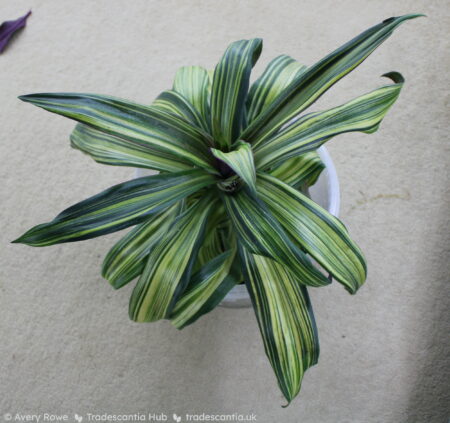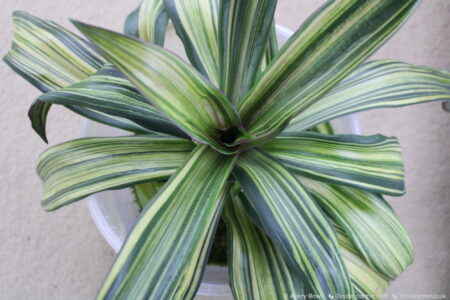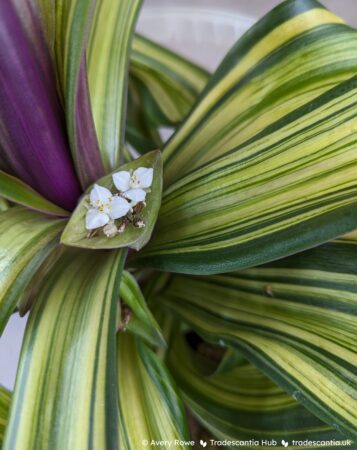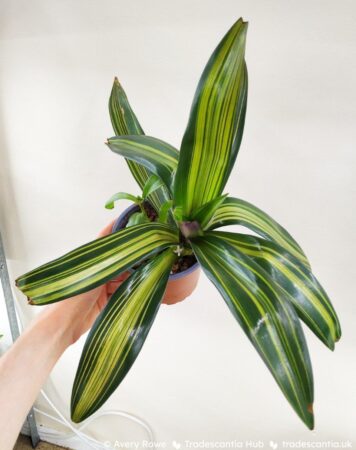Details
| Full name | Tradescantia spathacea ‘Vittata’. |
| Name status | Accepted, the valid name for a unique cultivar. Established by Laurentius (1859, p. 6). Because it was published before 1959, the Latin name with no description can be established (Brickell et al., 2016, Arts. 21.11, 27.1). Also known as:
The oldest and most widely-used name ‘Vittata’ is now accepted for this cultivar. Not to be confused with:
|
| Origins | Unknown. |
| Classification | The species Tradescantia spathacea is sometimes sold under its botanical synonyms Tradescantia discolor, Rhoeo spathacea, and Rhoeo discolor. |
| Legal protection | None. |
| Availability | Available from some nurseries and specialists. |
Description
Described with reference to the RHS Colour Chart (6th Edition: 2019 reprint).
| Species | Tradescantia spathacea. |
| Growth habit | Very large, upright and compact rosettes. |
| Foliage | Stems are 0.5-2cm thick with internodes 0.5-5cm long, completely hairless, strong yellow green (144B), almost always completely covered by overlapping leaf bases. Leaves are narrow and pointed, 15-30cm long and 3-6cm wide, completely hairless, with inverted marginal variegation. The upper surfaces are greyish olive green (NN137A), striped with light yellow (160B). The undersides are dark purplish grey (N187A) to strong yellow green (144B) under green areas, and greyish purplish red (N77B) to light yellow (160B) under pale areas. Sheaths are strong yellow green (144B). |
| Flowers | 12-15mm across, in leaf pockets close to the stem. Petals, stamen filaments, and pistil are white, anthers are yellow. |
References
Laurentius, H. (1859). Catalog der Gewächshaus-Pflanzen [Catalog of greenhouse plants]. Internet Archive link.
Brickell, C. D., Alexander, C., Cubey, J. J., David, J. C., Hoffman, M. H. A., Leslie, A. C., Malécot, V., Jin, X. (2016). International Code of Nomenclature for Cultivated Plants. PDF link.




